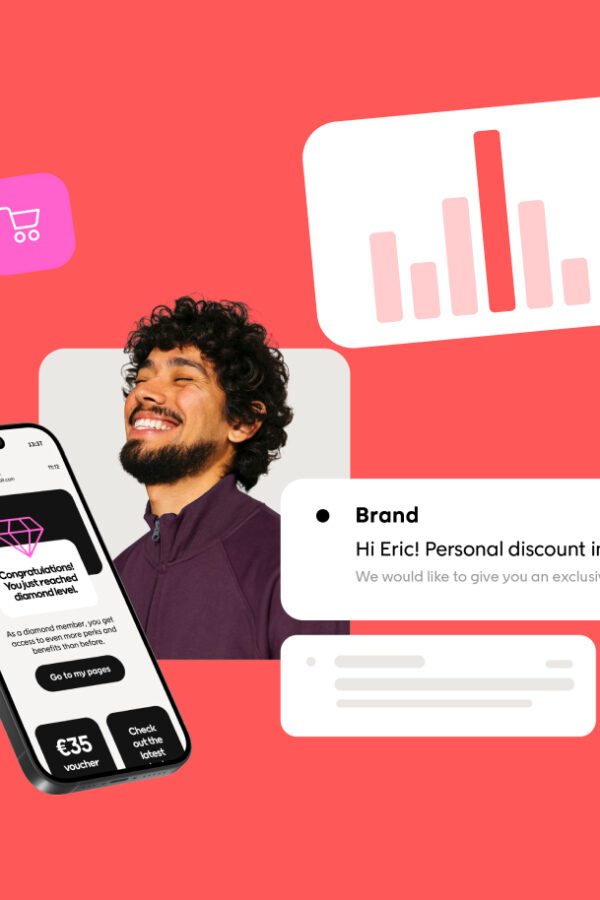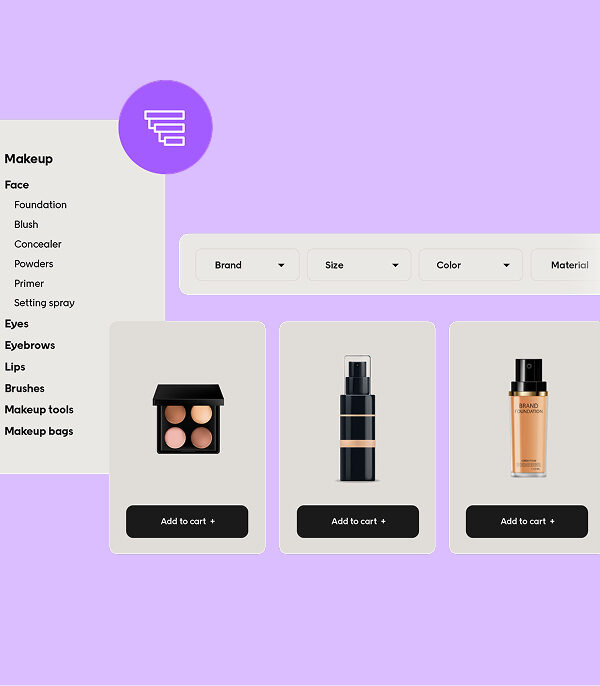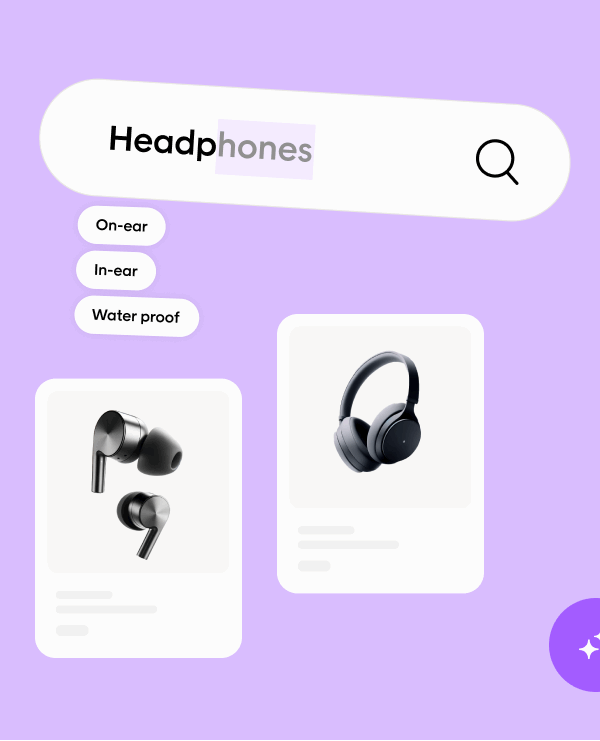TL;DR
- Set clear goals and track weekly KPIs to stay agile.
- Focus on UX and personalization to lift conversions.
- Connect every marketing channel for a seamless customer journey.
- Automate merchandising and loyalty to drive growth.
- Keep refining your e-commerce strategy with customer data and insights.
E-commerce continues to evolve fast.
Customers want flexible options, personalized experiences, and consistency at every touchpoint.
To keep up, retailers need strategies that combine measurable goals, smart technology, and meaningful relationships.
This guide shares proven e-commerce strategy tips to help your business grow faster, connect deeper with customers, and increase sales across every channel.
7 tips to build your successful e-commerce strategy
Building a strong e-commerce business takes more than great products. It means understanding your customers, improving each stage of their journey, and continuously optimizing based on data.
These tips will help your teams stay focused on what matters most: delivering experiences that drive loyalty and growth.
1. Set goals and measure what matters
Setting clear goals is the foundation of every successful e-commerce strategy. Weekly KPIs make it easier to track progress, react quickly, and stay aligned with your business model.
| Metric | What it tells you | Why it matters |
| Conversion rate | Percentage of visitors who buy | Shows if your e-commerce site experience works |
| Average order value (AOV) | Spend per purchase | Indicates upsell and cross-sell success |
| Customer acquisition cost (CAC) | Marketing cost per new buyer | Helps balance growth and profitability |
| Customer lifetime value (CLV) | Total revenue per customer | Measures loyalty and retention strength |
Tips for smarter measurement
- Link KPIs to key marketing efforts, such as new customer acquisition or retention.
- Review performance weekly instead of monthly to spot trends faster.
- Adjust marketing campaigns or budgets when progress slows.
Tracking these metrics gives you full visibility into your sales funnel and customer lifetime performance, helping your e-commerce business grow sustainably.
2. Optimize your e-commerce site for conversions
Your e-commerce website is your main sales channel. It must look great, load fast, and make it easy for your target audience to buy.
Improve UX and site speed
Insights from Voyado’s Retail Radar 2025 show that convenience and flexibility are now core parts of the user experience. Not only that, but our Inside e-commerce guide 2026 shows that 68% of e-commerce leaders say conversion is their top priority for 2026.
Features like named-day delivery and out-of-home pickup options can directly improve conversion rates and customer satisfaction.
Quick UX checklist
- Use clear, benefit-driven product descriptions and detailed specifications.
- Optimize navigation so visitors find what they want in two clicks or less.
- Shorten your checkout flow and enable guest checkout.
- Make your site mobile-first for fast, seamless experiences.
Support SEO and search visibility
Your search engine optimisation efforts should focus on attracting organic traffic from potential customers.
Conduct keyword research regularly to identify relevant terms and build optimized content.
This improves discoverability and ensures your products appear for the right audience.
A fast, intuitive e-commerce site gives shoppers confidence. When they enjoy the experience, they spend more and come back more often.
3. Build seamless customer journeys across every channel
Modern shoppers move freely between social media, physical stores, and websites. Your marketing strategies need to reflect that behavior.
Integrating data across marketing channels helps you create personalized and consistent experiences that engage customers wherever they shop.
How to create one connected experience
- Sync customer data from all touchpoints to unify insights.
- Use predictive segments to target the right audience on social media platforms.
- Automate follow-up email marketing based on browsing or purchase behavior.
- Keep pricing, rewards, and messaging consistent online and offline.
Explore more ways to connect your channels in our guide to omnichannel e-commerce strategy.
When customers move smoothly between touchpoints, they see one unified brand, not disconnected campaigns. That builds lasting loyalty.
4. Turn browsers into buyers with smart merchandising
E-commerce sales strategies rely heavily on how products are presented and recommended. The right merchandising approach turns casual visitors into paying customers.
Automate merchandising for efficiency
Manual merchandising takes time. Automation can help manage inventory, display the best-performing products, and adapt layouts in real time.
Learn more in our blog on e-commerce merchandising.
Personalize recommendations
Use customer data, browsing patterns, and purchase history to promote relevant items.
Personalized recommendations increase average order value and future purchases while improving the customer experience.
Example: Smart product pairing
| Customer action | Recommendation | Goal |
| Adds sneakers to cart | Show sports socks or fitness watches | Increase average order value |
| Buys a skincare kit | Offer a future discount on refills | Drive repeat business |
| Reads a how-to guide | Suggest complementary products | Re-engage customers |
5. Build trust with reviews and community content
Customer trust is one of the strongest drivers of e-commerce success. Reviews, testimonials, and user-generated content provide the social proof new customers need before making a purchase.
Ways to build credibility
- Ask verified buyers for feedback after each order.
- Share authentic reviews prominently on your e-commerce site.
- Highlight customer stories that reinforce your brand story.
- Respond professionally to negative reviews to show transparency.
Products with at least five positive reviews are 270% more likely to be purchased, according to the Spiegel Research Center.
Encouraging community engagement on social media platforms keeps customers connected to your brand long after checkout.
6. Reward loyalty to grow customer lifetime value
Acquiring new customers is important, but retaining loyal customers is what truly drives profitability.
Loyalty programs that go beyond discounts help foster customer loyalty and strengthen long-term relationships.
Creative ways to reward loyalty
- Points or rewards for reviews, referrals, or social sharing.
- Exclusive early access to new collections or sales.
- Personalized rewards based on customer data and purchase history.
Track repeat business, customer lifetime value, and overall engagement to understand the full impact of your loyalty efforts.
The stronger your relationships, the higher your retention and the more sales you’ll generate over time.
7. Keep evolving your strategy with data
No e-commerce strategy is ever finished.
Use insights from analytics, customer feedback, and campaign performance to fine-tune every part of the journey.
Simple ways to evolve
- Conduct keyword research quarterly to uncover new opportunities.
- A/B test product pages and marketing campaigns.
- Monitor marketing spend, conversion rates, and customer acquisition cost.
- Optimize your post-purchase experience to maintain satisfaction.
| Focus area | Action | Impact |
| Search engine optimisation | Update category pages and blogs regularly | Attracts more organic traffic |
| Email marketing | Test content and timing for different segments | Boosts open and click rates |
| Product pages | Add visuals, FAQs, and reviews | Builds customer trust and engagement |
Continuous improvement gives your brand a lasting competitive advantage and keeps your teams aligned with changing customer expectations.
That ongoing optimization is what separates good brands from great ones. Here’s how to keep that momentum going.
Where to take your e-commerce strategy next
Building an effective e-commerce strategy is never finished. The most successful retailers keep testing, improving, and connecting every part of the customer journey.
Here are three simple next steps to strengthen your growth this year and beyond:
- Start small and measure fast. Pick one area, such as UX, automation, or loyalty, and set clear KPIs to track real progress week by week.
- Turn insights into action. Use your customer data to predict what shoppers want next, then tailor offers and experiences that match.
- Invest in connection. Bring your marketing, loyalty, and merchandising tools together so every channel feels like one brand experience.
Every improvement you make compounds over time and increases both conversion and loyalty.
See how Voyado helps retailers create connected experiences that drive measurable growth.
Book a demo to explore what is possible for your business.
FAQs
What is an e-commerce strategy?
It’s your plan for how your e-commerce business attracts, converts, and retains customers across multiple channels.
How can I increase e-commerce sales?
Improve UX, automate merchandising, and run targeted social media and email marketing campaigns to boost conversion rates.
Why is omnichannel important?
Customers engage across multiple channels. A unified experience connects every touchpoint, strengthens customer relationships, and drives more online sales.
What KPIs should I track?
Focus on conversion rate, average order value, customer acquisition cost, and customer lifetime value to measure success.
How does automation help?
Automation simplifies inventory management, streamlines marketing campaigns, and keeps customers engaged through personalized experiences.









